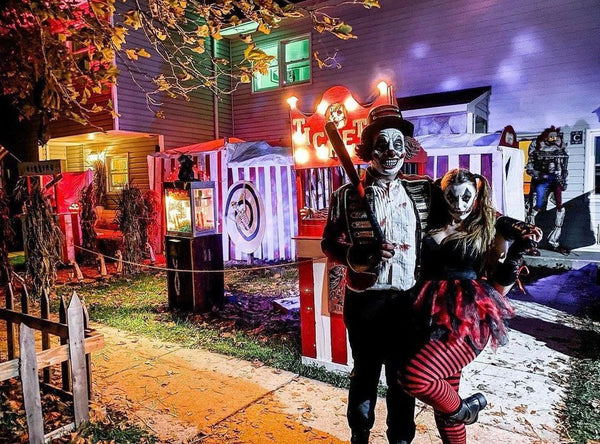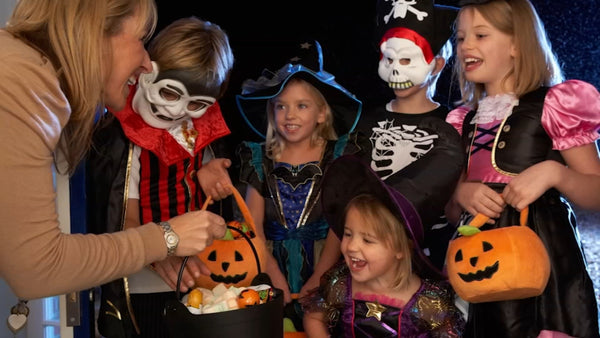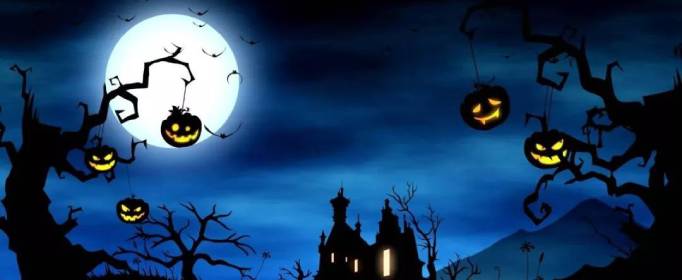The origin of Halloween
Many peoples in the world have a festival to commemorate the return of the dead, such as "Halloween" in the West, "Día de Los Muertos" in Mexico, and "Seleenwoche" in Austria;
As well as China’s "Zhongyuan Festival" (Buddhist called "Obon Festival"), this festival was also introduced to Japan in the Asuka period with Buddhism in the Sui and Tang Dynasties, and combined with local customs to form Japan’s own "Obon Festival".
Halloween in English is the abbreviation of All Hallows' Eve, which is also the "Eve of All Saints' Day". In the annual calendar, it is a festival to commemorate the dead and saints. Most people believe that Halloween originated from the ancient Celtic harvest festival, also known as "Samhain".
The ancient Celts were the first prehistoric people to rise north of the Alps on the European continent. The Savin Festival is their New Year and the most important festival of the year. From the end of October, the weather turns cooler, the harvesting of crops is nearing the end, and the cold winter is about to begin in November. As the season's change, Celtic life has also changed.
The herders returned from the mountains, and there was no more farming in the fields. People stored food started slaughtering livestock or stayed in the house to do some handwork to pass the time.
At the turning point of the season and the transition between the old and the new, the Celtics believe that life has also moved from the light (summer) to the dark (winter) side. The boundary between life and death becomes weak, and the undead and the devil can easily Spanning between two worlds.
So on the evening of the last day of the old year (that is, October 31, sunset in the Celtic calendar is the beginning of the day), people lit bonfires, dressed up, and used flames and dances to drive away from the devil until the first day of the new year (November 1 day). At the same time, prepare food and invite the dead souls of the ancestors home. This is where trick-or-treat (trouble without sugar) came.
Why do foreigners spend Halloween?

Around the 9th century AD, considering that many saints did not have their holiday, November 1st was designated as Halloween. Since it was only one day away from the Ghost Festival, people later merged them into one. Later, this festival spread to North America and some other regions. With time, the meaning of Halloween has gradually changed, becoming positive and happy, and the festive meaning has become mainstream.
The meaning of Halloween candies

- November 2nd is called "ALL SOULS DAY" (Day of All Souls). On this day, believers trek through remote countryside, begging from village to house for "soul cakes" made of flour and raisins.
- It is said that the people who donated the cakes believe in the prayers of the church monks, hoping to receive the blessing of God so that the dead relatives can enter heaven as soon as possible. This tradition of begging from house to house has evolved into a game where children carry pumpkin lanterns and beg for sweets from house to house.
- When meeting, the children dressed up as ghosts and elves always threaten to "make trouble if you don't eat it", and the host naturally doesn't dare to neglect, saying "please eat! Please eat!" and put the candy in at the same time. The children carry in the big pockets.
- On Halloween night, children and teenagers will make up as ghosts and ask for candies along the street. Therefore, all kinds of candies can be regarded as a kind of Halloween food. And candies packed in orange, brown, or black colors common on Halloween.
Why do you hang Jack-o'-lantern on Halloween?

- Jack's pumpkin is also known as pumpkin lantern, which started in Ireland. After Halloween, put the pumpkin lanterns on the roadside waiting for garbage collection. After Halloween, put the pumpkin lanterns on the roadside waiting for garbage collection.
- Legend has it that there was a man named Stingy Jack in Ireland who invited the devil to drink one day. Because he had no money to pay after drinking, he persuaded the devil to become sixpence to pay for the wine, but Jack did not use it to pay for the wine. Instead, a piece of silver paper was used to suppress the devil so that it could not get out.
- Later, the devil promised Jack not to scare him for a whole year, and then Jack let the devil out. The Halloween demon appeared again in the second year, and it promised not to harass Jack for a year, but before the end of the year, Jack died.
- After death, heaven does not accept him because he is very stingy; hell does not keep him because he teased the devil. With nowhere to go, he finally had to keep walking, carrying a white radish, with charcoal fires given to him by the devil to illuminate the road and find a place to rest.
- Later, the Irish people used potatoes or rutabaga to make lanterns. In the 1840s, when new immigrants came to the American continent, they found a better material than white radish, which is pumpkin; therefore, the Jack lanterns they see are usually The pumpkin is made.



